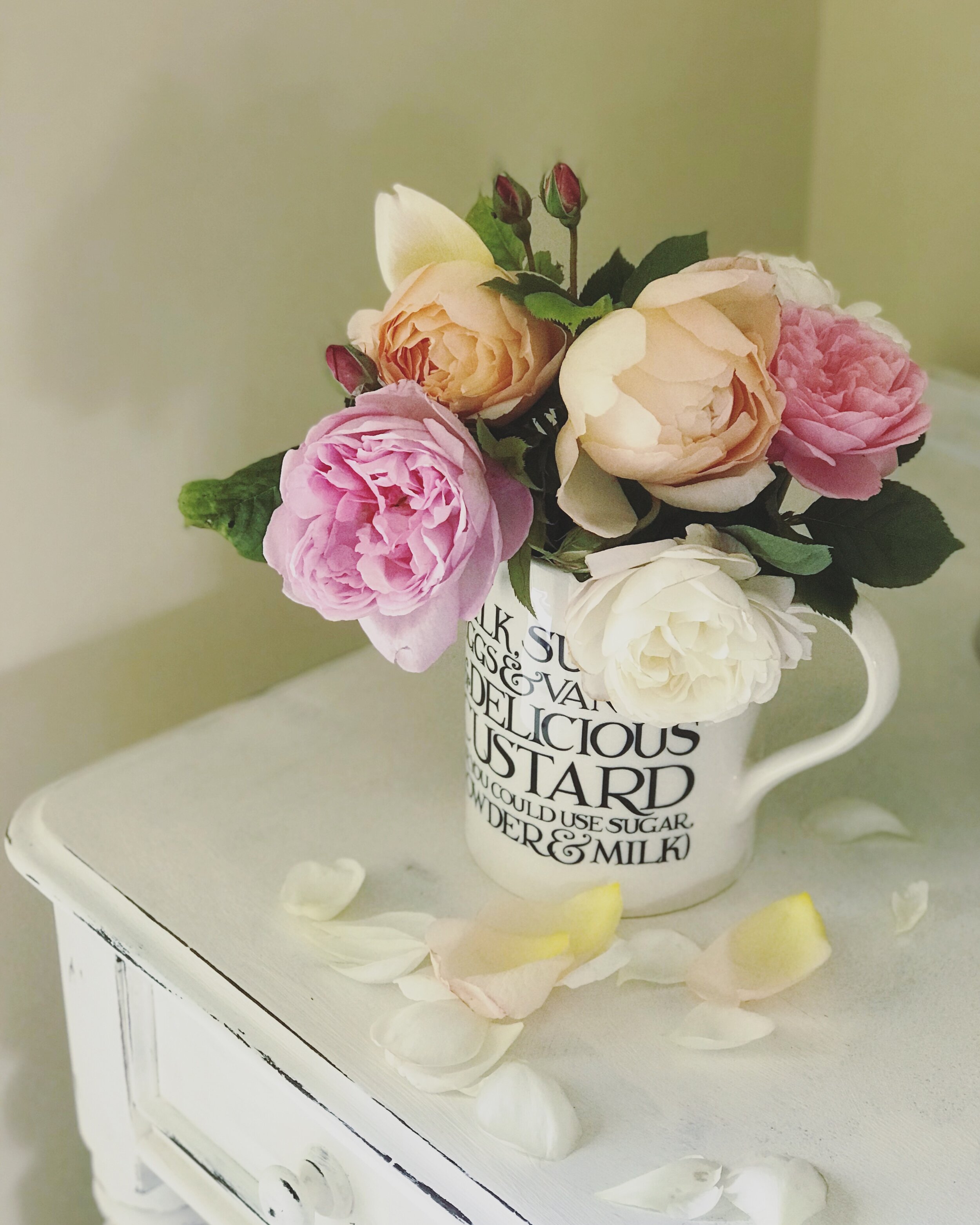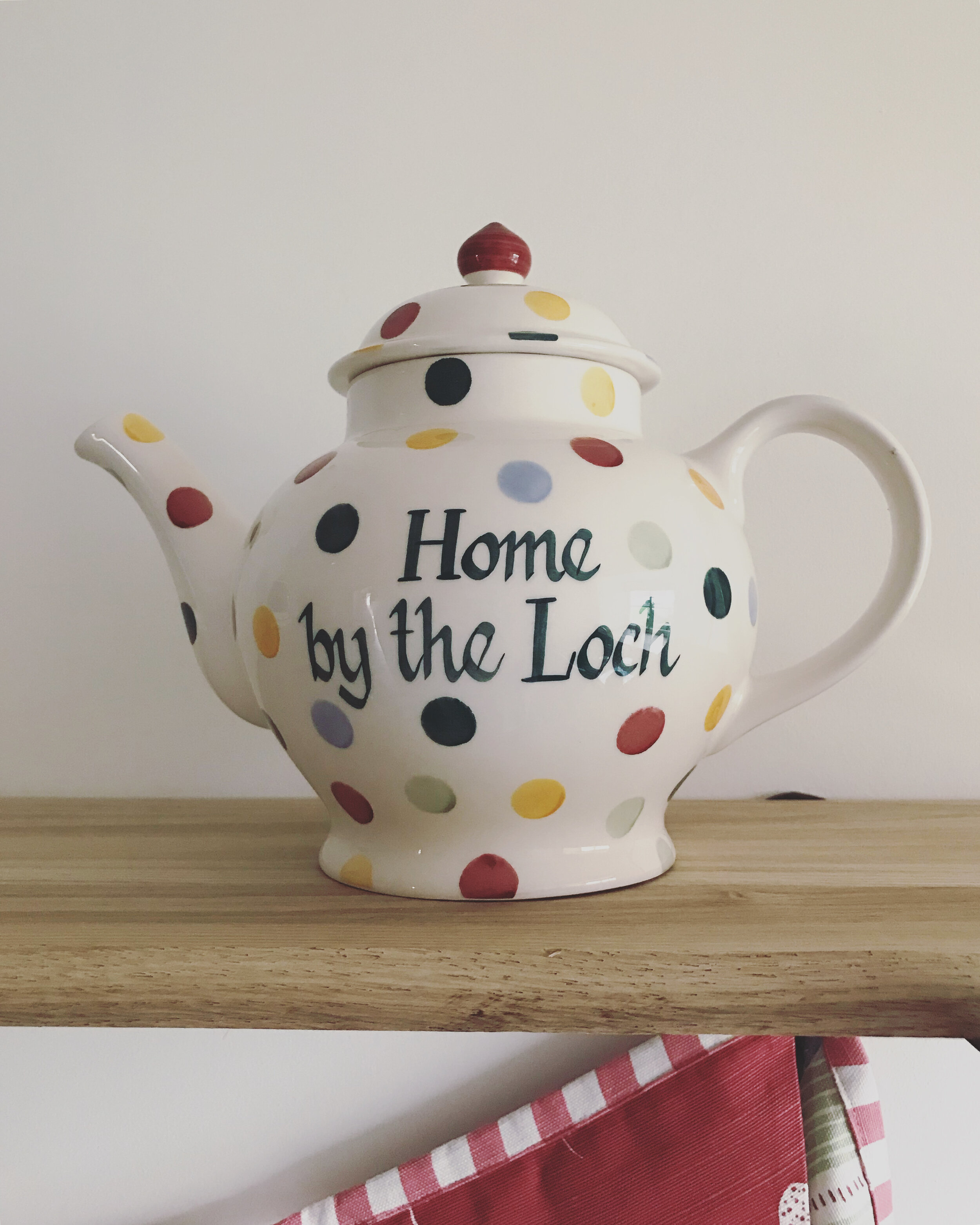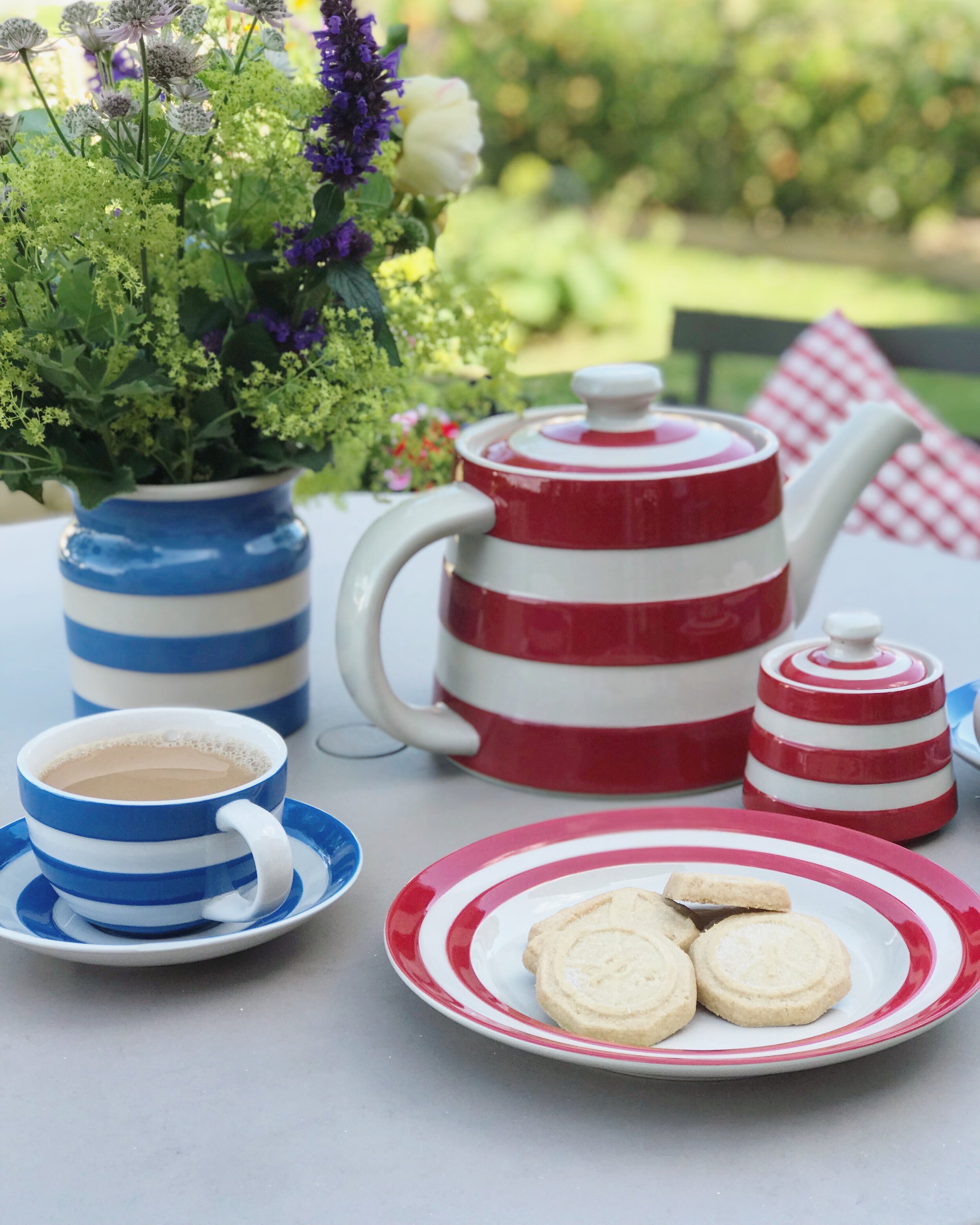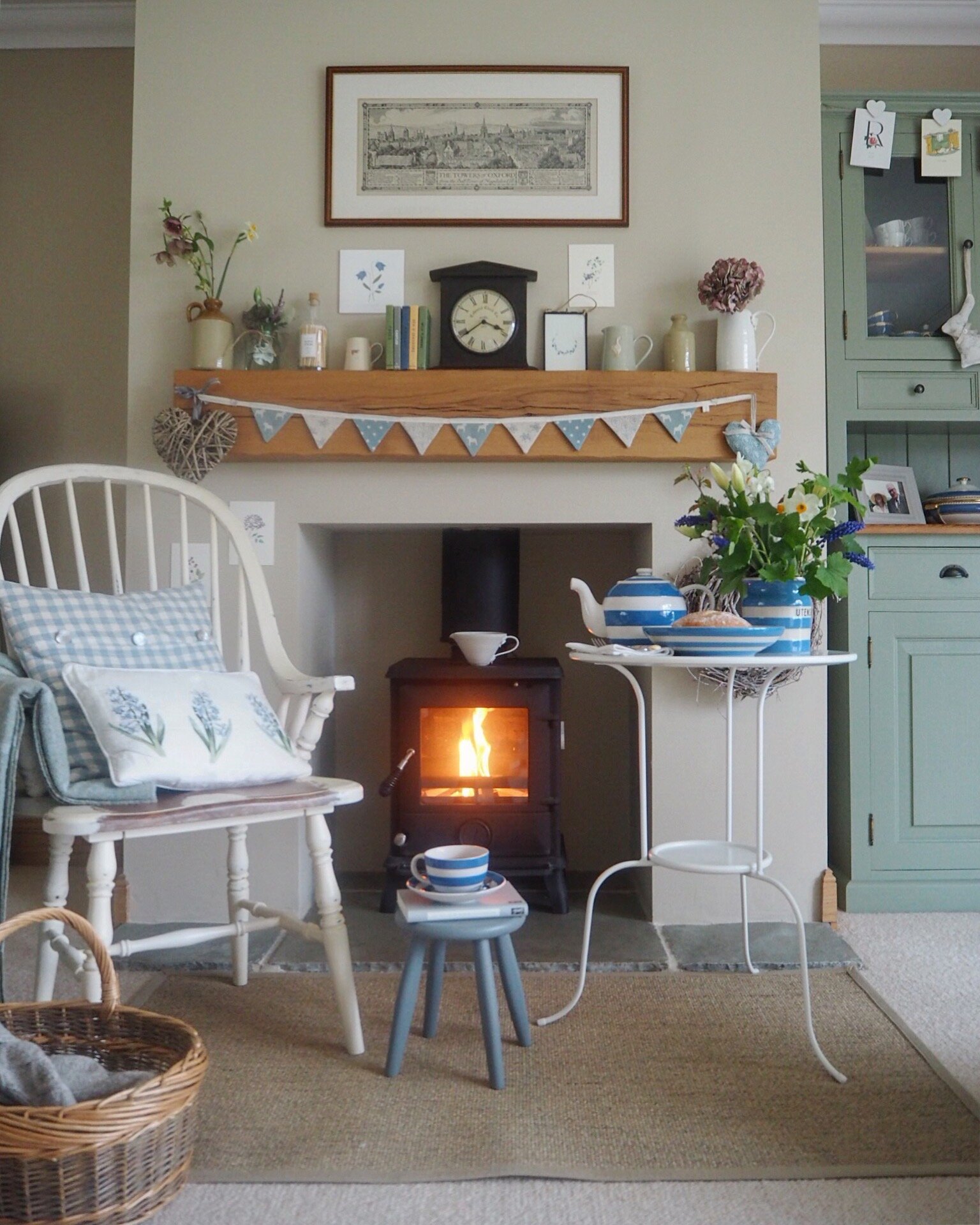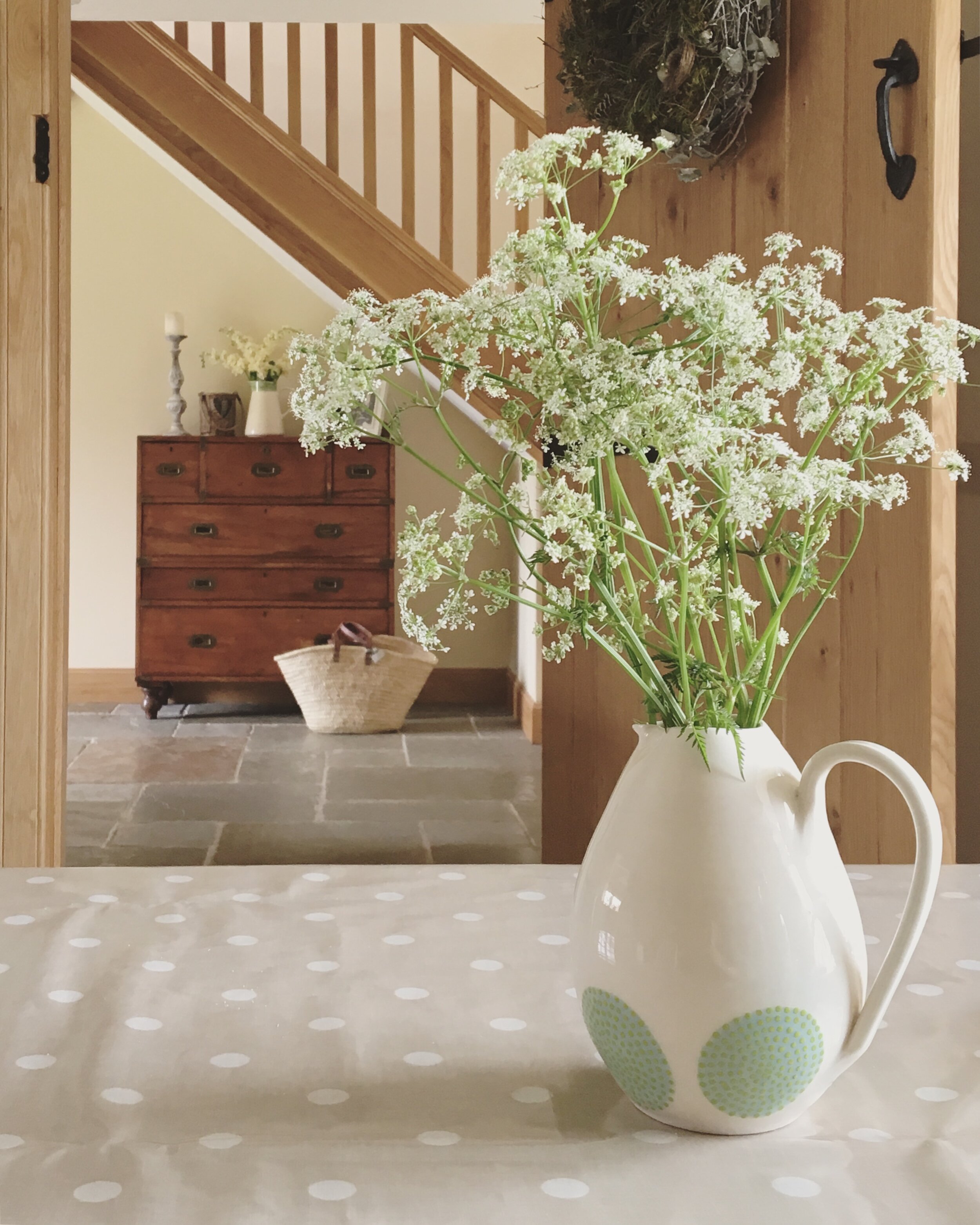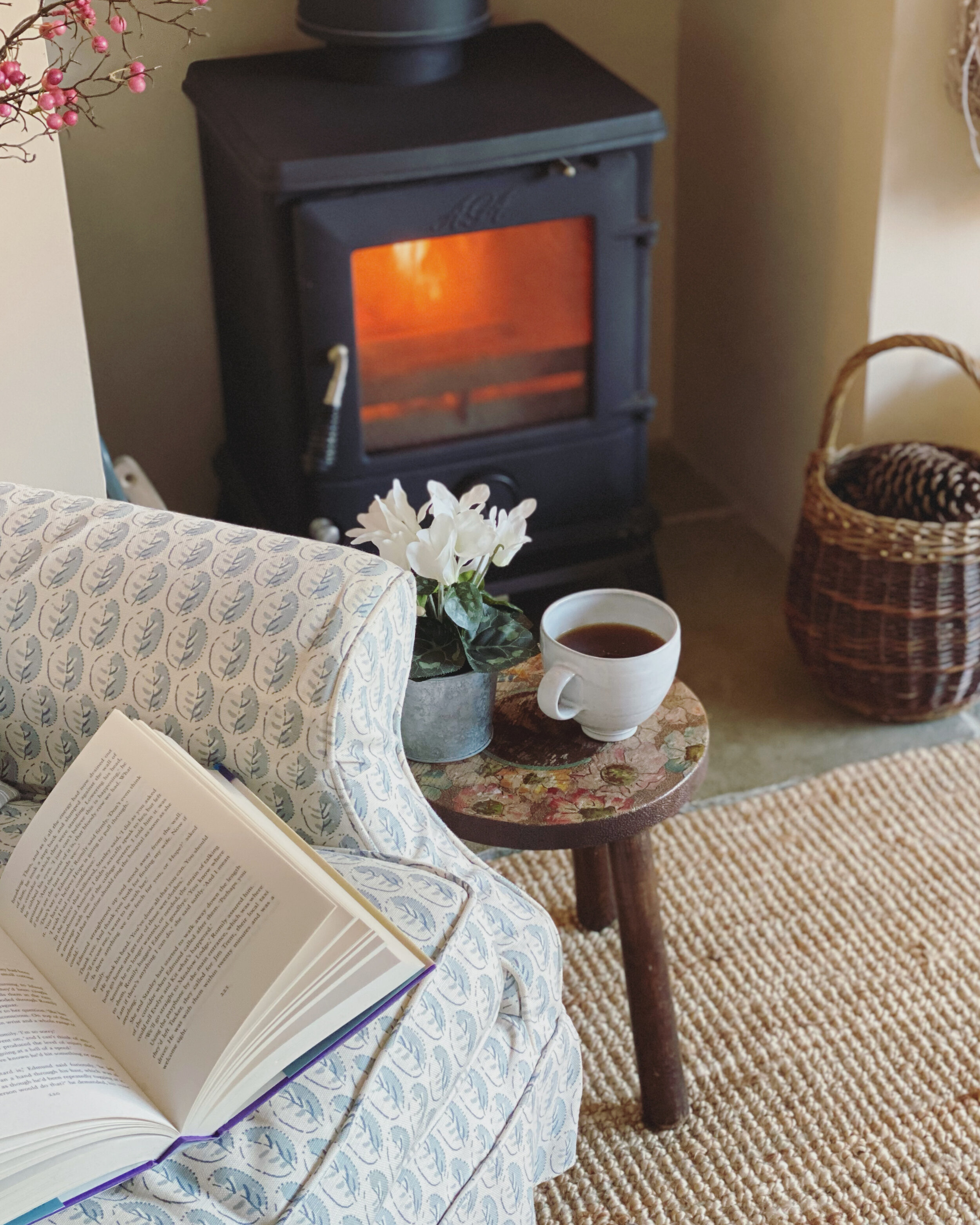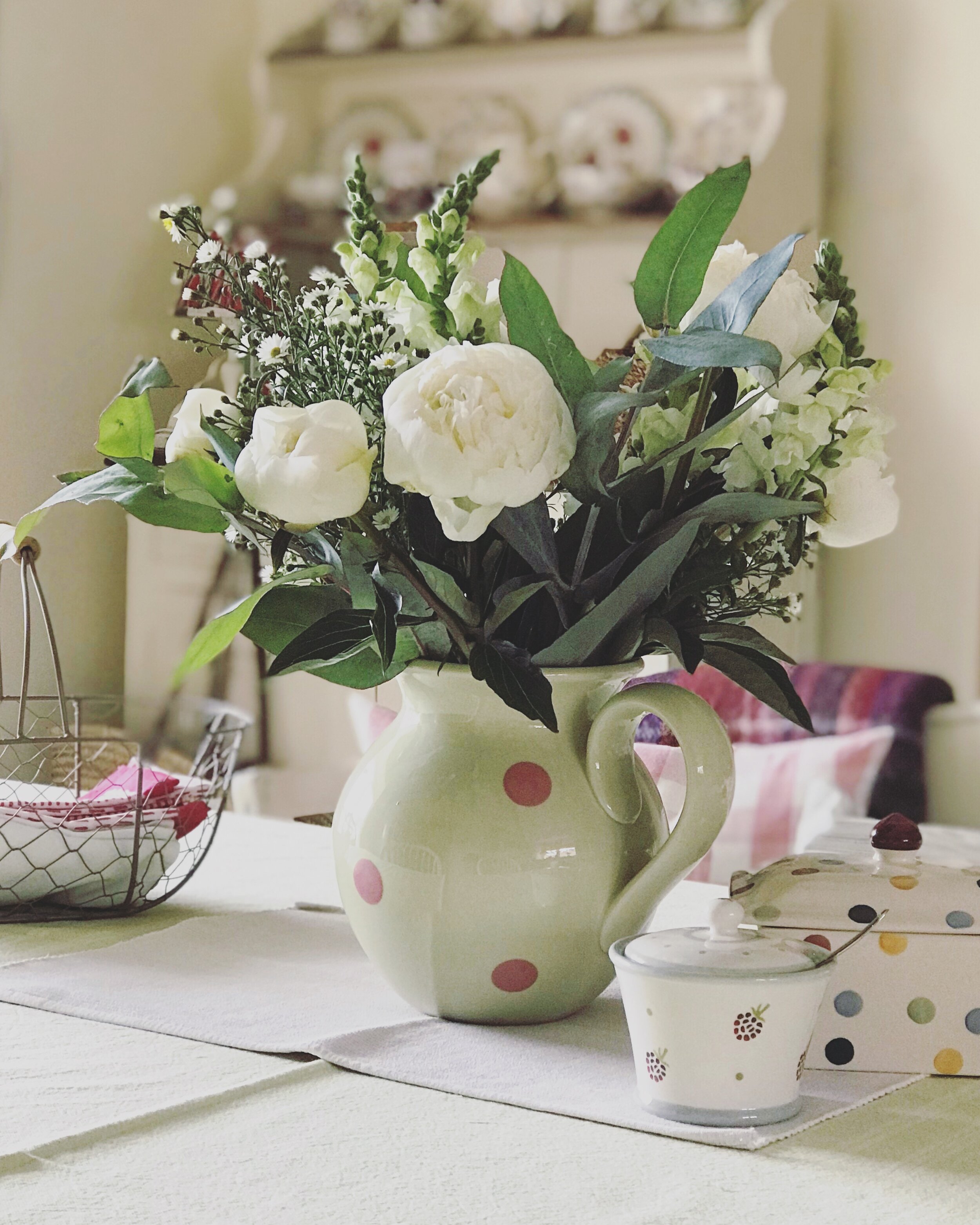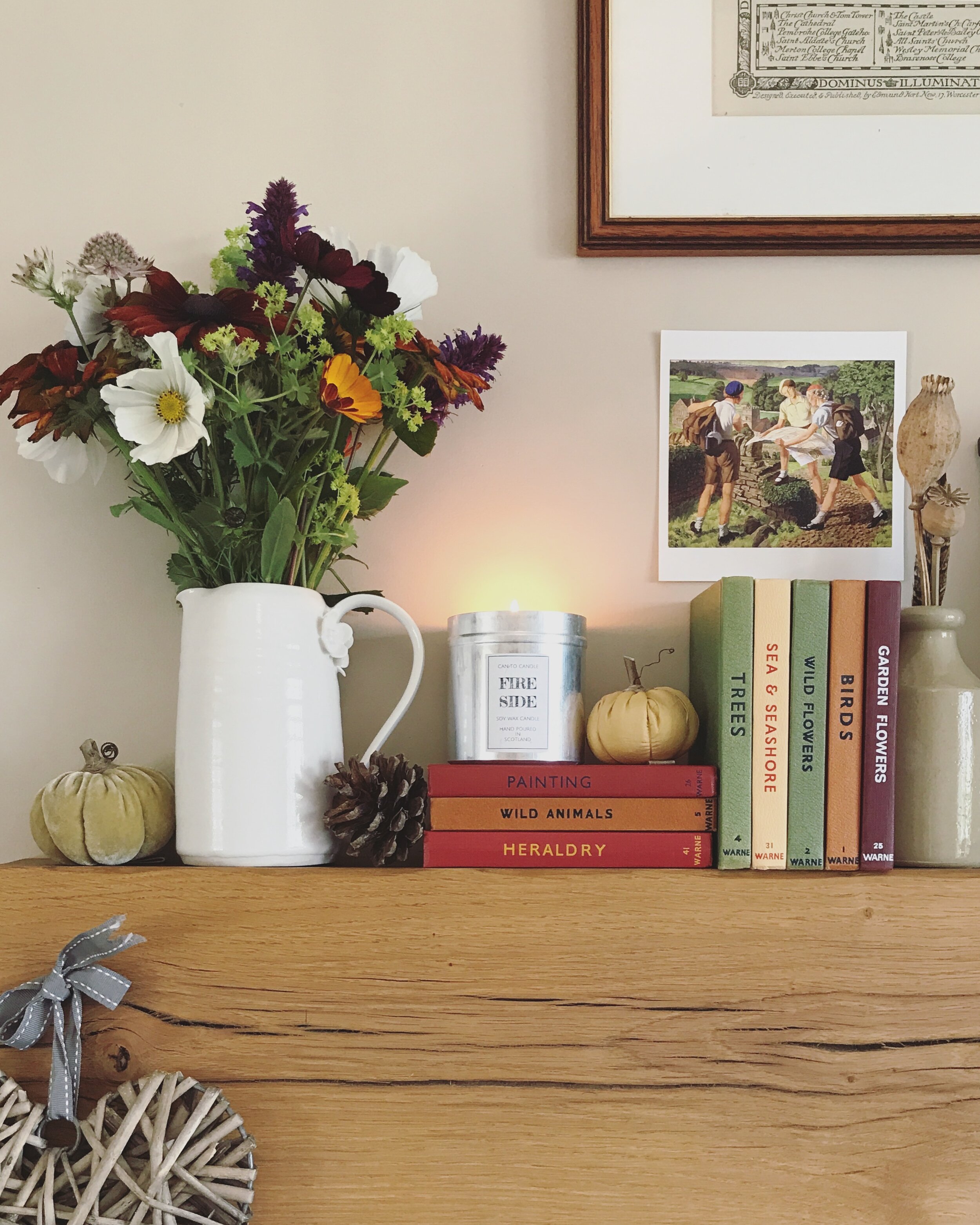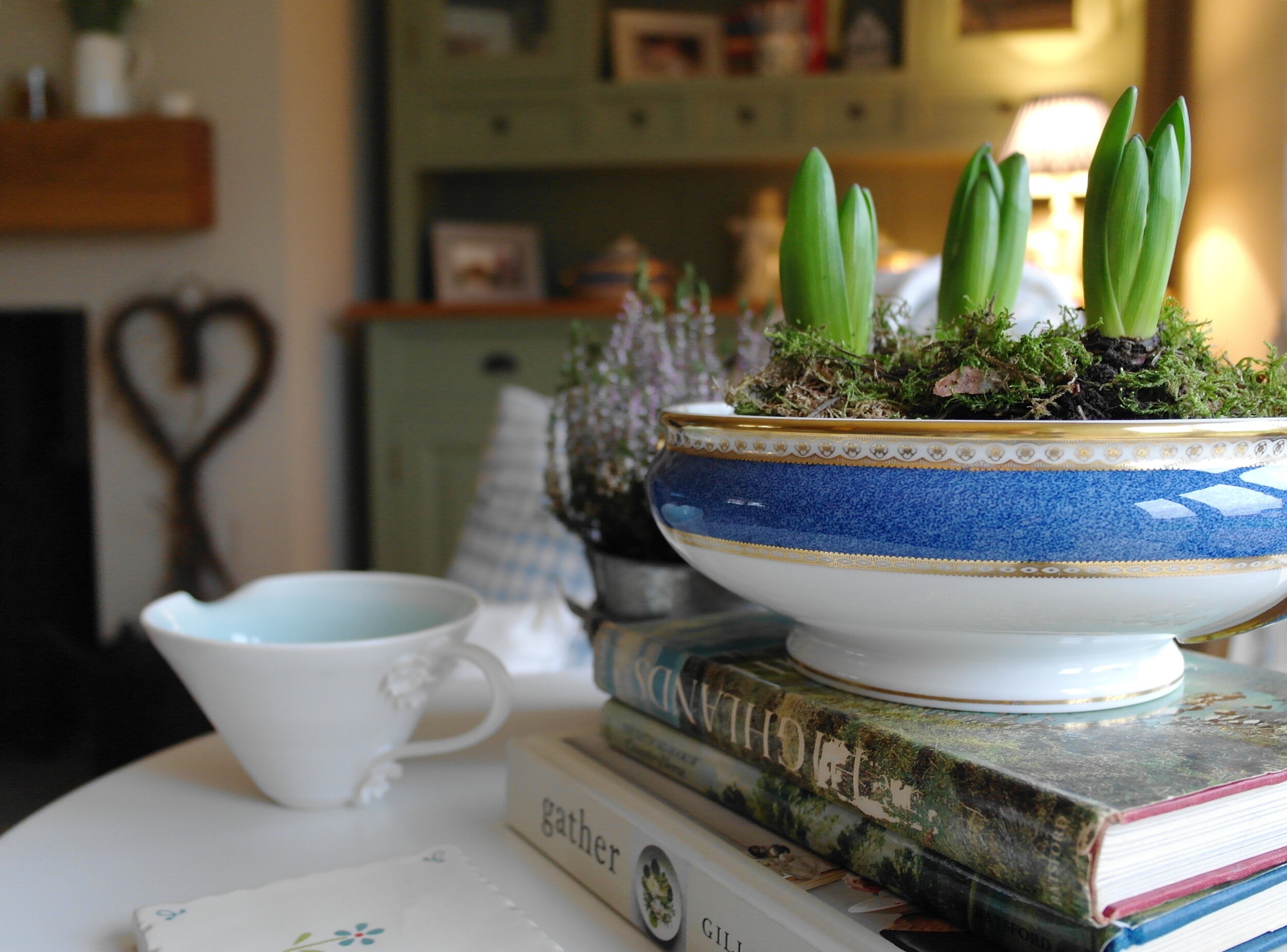A Dresser of Tales
For me, the thought of living in a house without a dresser is akin to living without a beating heart. It is incongruous to the very reverence of home. To be without one would be like a bibliophile living in a house without a bookcase or a painter inhabiting a room with no light. It is simply incomprehensible to me. My entire life can be plotted and recorded through an array of kitchen dressers over the years, all different in style and date but all documenting the life I have lived so far. Because in essence that is what a dresser is. It is a tangible photo album, a tactile journal of the discoveries and dreams of its owner.
My mother had a large Welsh oak dresser that seemed to engulf every room it occupied. It was Jacobean in design and despite the high shine it acquired over many years of her loving but incessant polishing, it still had a touch of gloom about it. It lurked in the shadows, its hefty bulk slumping into the worn carpet underneath. But she loved it. She added to it gradually throughout her life, but unlike me, she rarely played around with the styling of it. Once a piece was found and bought, it took up its rightful place on the dresser for life.
My love of pottery comes from my late mother. She was especially drawn to hand-thrown stoneware pieces, glazed in colours inspired by the landscape. As a child I didn’t fully appreciate the workmanship of these pieces, I found them uninspiring and lustreless. Of course I don’t feel that way now but then I think earthenware and stoneware are pieces you grow to respect with time.
Like most dressers, hers had two huge cupboards underneath the top shelves and in these her Wedgwood Pennine dinner service was kept. My father and her were given this as a wedding gift but I can’t recall us ever actually having used it. As a northern lass, I’m certain it was the name that appealed to her more than the actual design. First manufactured in 1965 it was described as ‘The Shape for Modern Living’ which seemed to conflict with the woman who only ever wanted a simple, old-fashioned life in the country. However despite its geometric, tile-like design, it did echo the rustic earthenware pieces of old.
But as I said, we never used it. Like her Laura Ashley dresses and Yves Saint Laurent perfume, she always saved it for best and in her mind there was rarely a day or occasion that met her criteria for best. I had almost completely forgotten about her everyday crockery until I started researching this blog. When I stumbled across on image of one of the plates, the memories came flooding back to me, which is quite apt because the dinner set was called ‘Memory Lane’. Also manufactured in 1965 by the Royal China Co, this charming pink Transferware design featured a traditional pastoral scene with a cottage on the edge of a pond, nestled among oak trees. Around the border of each piece were intertwining oak leaves and acorns. I wish I’d kept some of these pieces but as a child you never know what you’ll come to care about as an adult. Besides, by the time I reached my teenage years, I don’t think there was much of it left. Years of late night toast after an evening in the pub took their toll and pieces disappeared from the cupboard without notice.
A few years later she met my stepfather - one of the kindest men I have ever known - and moved to Suffolk. She had finally achieved her dream. They lived in his cottage which overlooked wheat fields and every Sunday the peal of bells from the church in the village would come resounding over them. It was Peter, my stepfather, who introduced her to the Henry Watson Pottery in nearby Wattisfield and whenever any of us went to visit her, a trip to ‘Watty Potty’s’ as she called it was never missed. She bought it all and I’m not exaggerating. Little Original Suffolk Terracotta herb and condiment pots ran the length of her worktops and dry goods canisters became the backdrop to her dark green Rayburn. The bread crock made it onto the dresser along with a milk jug and lidded sugar bowl. There is not a single piece of my late mother’s pottery that I cannot recall. From the huge hand-painted Portuguese casserole dish that only ever came out at dinner parties when she made Coq-au-Vin, to her glazed coffee mugs that were reserved for Sundays when she treated herself to a coffee made with hot milk. They are all in my head and intrinsically linked to my life.
And I have become a pottery-obsessive in her wake. I’d rather buy a new jug than a pair of shoes. Recently I read a piece of writing by the queen of spongeware herself, Emma Bridgewater in which she openly admitted that she has probably spent more money on her kitchen dressers than her wardrobe. I laughed out loud when I read this. I can’t say in all honesty that the same is true of myself but I fully respect and appreciate the sentiment. But like Emma, I too know exactly what is on either of my two dressers at any time, which is in itself remarkable when I think about how often I change them.
My first ever kitchen dresser was a makeshift one, a mongrel that I bred myself. The base was an open beech kitchen unit from Habitat and above it were 3 shelves. It was around this time that Emma Bridgewater’s iconic Polka Dot design was introduced but in those days I couldn’t afford her pottery. My collection comprised mostly of eBay, flea market and charity shop finds; delicate cups and saucers with old-fashioned hand-painted florals and jugs from potteries long since disbanded.
My hybrid dresser has long gone but some of those earlier finds are still with me today.
My first shop bought pieces of pottery were an Emma Bridgewater Black Toast mug and dinner plate. I remember feeling so extravagant when I purchased them from a gift shop in The Covered Market in Oxford. I drove away with them on the passenger seat, excited at the prospect of getting them home and unwrapping them. Because the joy of buying a new piece of pottery is not only in the use of it but in the displaying of it. My dresser is an expression of me as a person. It is a montage of my personality and my interpretation of home. Over the years I have continued to collect Emma Bridgewater but unlike my late mother, I’m not precious about it. We use it everyday and I take a great deal of pride in setting it out when friends and family come to visit or stay. Yes, there are the inevitable knocks and cracks. I’ve often heard the fearful whisper of, ‘Oh no! That’s one of her favourite pieces!’ coming from the kitchen, knowing all too well that someone has clipped a plate on the corner of the dishwasher, but I never get upset. Because the greatest joy of Emma Bridgewater is that there’s another design waiting to fall in love with all over again.
I now need to talk to you about quiche. I take quiche very seriously. In my opinion, the humble quiche has been assigned its own Gods, unknown spirits who have powers over its fate. There are three words in the English language that should NEVER be strung together and those words are ‘low fat quiche’. No! Quiches should be buttery and cheesy and just the wrong side of wobbly. So what has quiche got to do with pottery I hear you ask. Well, should you ever find yourself in the little village of Aston in Oxfordshire, go into the Aston Pottery cafe and order a quiche. I promise you won’t regret it. We lived a few miles from Aston for many years and this was one of our favourite places to visit. It was actually my best friend, Natalie, who introduced me to the pottery. Her parents had bought her and her husband a set as a wedding gift and I loved it. At that time we weren’t living near Aston but once we had relocated I sought it out and started to collect it for myself. The pottery was opened in 1990 by Jane and Stephen Baughan who create robust tableware with an array of hand-stencilled images. Since living in Scotland, we’ve lost quite a few pieces, so the set is becoming increasingly more important to me. They are my connection to a place that has long since been lost to me. And yet when I take the big Auricular jug into the garden to fill with cut flowers, as I hold it close to my chest, for the briefest of moments, I can taste the crust of the quiche and smell the lavender in the gardens at Aston.
Part of my collection of Aston pottery, lovingly collected between 2000 and 2012
There was very little my mother didn’t know about pottery. When it came to sniffing out clay, she had the nose of a bloodhound. Her inner compass was calibrated so that her magnetic north pointed to earthenware. I swear she could hear the gentle hum of a turning potter’s wheel in a howling 50 knot gale! She had pieces from all over the United Kingdom, from the remote islands of Scotland to the tip of Cornwall. She gathered and curated pieces long before the term became a trendy hashtag on social media. I was with her when I saw my first piece of Cornishware. At the time we were nowhere near Cornwall, we were in a small shop in Lavenham, Suffolk. I was only weeks away from joining my husband in Cyprus and the few possessions we had to start our married life with were already making their way across the ocean in a shipping container. She told me how the blue and white stripes represented the sky, sea and white sandy beaches of Cornwall. I bought a little jug there and then and carried it in my hand luggage across the thousands of miles to its new home. My mother’s knowledge of the company was patchy but it was her understanding that Cornishware was no longer being made in the UK. It was many years later that I befriended one of the new owners through Instagram and I have followed the pottery’s growing story ever since. There is so much love for this iconic British brand. I can’t explain why but it just makes me smile. There is a comforting nostalgia to the pottery, knowing that it has been the kitchen companion to housewives across this land for generations fills you with confidence. These are the mixing bowls in which great quiches are made! Sadly my little blue jug never made it home but I’ve been incredibly fortunate to have been gifted many of my pieces. We use the red set for breakfast most days and my daughter has told me unequivocally that she will have blue Cornishware in her home. The brand may have diversified into new colours but the blue and white will always have the truest place in my heart.
With so many pots and pieces to love, my dressers are constantly changing and evolving. The emergence of a new season is not signalled by events in my garden or changes to my wardrobe but by what is on my dressers. In the spring, seed packets are propped up against the plates and cups will be brimming with bouquets of plant labels. Come the summer, those same cups keep nuggets of string from unravelling and any jug that isn’t being used for milk will be full of cut flowers from the garden. As summer draws to a close, small bunches of lavender and strawflowers will hang in bundles from the hooks that will later hold winter greenery. And all the while, as the months come and go, I’ll move pieces around, styling and restyling them as my mood takes me. If this sounds as though I’m making more work for myself, then trust me when I say that it doesn’t feel like that in the least. I find therapy in rearranging my dressers because each piece holds a memory that can distract me from whatever is worrying me at the time.
My most treasured piece.
There is one piece of pottery that I treasure above all others; my cream mixing bowl. I had been working as the Head of Performing Arts in a small preparatory school in Oxfordshire for seven years when we decided to relocate to Scotland. The staff, with whom I’d shared some of the best moments of my life, gave me some vouchers for nearby Burford Garden Centre. I went with my friend and fellow colleague, Claire and saw this bowl. It was extravagantly expensive but she told me that she and our fellow teachers would want me to use the vouchers for something to treasure and love. I told her we’d go for a coffee and if it was still there after then it was clearly meant to be mine. I remember buttering my scone and hoping all the while that no passerby would love it too. But as you can see, it was meant to be. And I do use this bowl. It’s the bowl in which I scramble our morning eggs on the weekend. As I hold it close to my chest and whisk the eggs, like so many pieces of my pottery, I am lifted up and carried away on a carpet of memories. Suddenly I am in the theatre with the children who are nervously waiting to perform in the wings. I am on the cricket field with the smell of freshly cut grass filling me senses. I am under the willow tree in the pub garden with my collegues after work. I am everywhere that I hold dear.
I’m almost certain that it was in Burford Garden Centre that I first discovered Hogben pottery too. Once again it was love at first sight. My first piece was a tiny jug with a robin on it. There is a hidden tactility to these ceramics; you can’t help but gently sweep your thumb over the little raised creature or flower that decorates each piece. There is a naivety about this pottery, an innocence that radiates comfort and calm.
My first tiny jug from the Hogben pottery.
Whilst the kitchen dresser tends to hold varying displays of everyday tableware, the dresser in the sitting room is reserved for decorative pieces. I have discovered so many extraordinary potters over the years. Someone once asked me at what point a piece of pottery becomes merely decorative and I must confess that I don’t really have an answer because I use all of my pieces, regardless of their monetary or sentimental value. These pieces were made to be used. My more bespoke jugs may never make it on to the breakfast table but they will occasionally hold a small bunch of cow parsley in the summer. Somedays I might take one of my Katrin Moye mugs from the dresser and walk down to the loch gate with it. Like wearing a skirt on a long walk, having a good cup of coffee in a treasured mug can make a moment matter so much more. And perhaps this is where`I am like my mother? Leaning on the loch gate, watching the steam emanate from a much loved mug as the sounds carry across the water, feels like a Sunday morning in Suffolk all over again. After the moment has come to its natural end, I’ll turn back towards the house, carefully wash the mug by hand and put it back on the dresser. And there it will stay, a brief sentence in the story that will be my life. Uneventful perhaps but cherished all the same.



